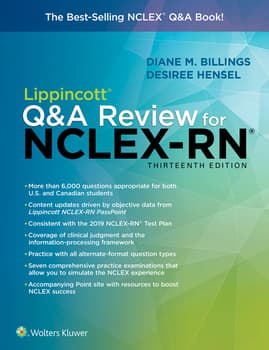Multiple response or “select all that apply” questions that require you to select all answer choices that apply from among five or six answer options. Like hot spot, fill-in-the-blank, and drag-and-drop questions, these other types of questions are called alternate format questions andare part of the test pool of questions for the NCLEX-RN®exam.
Let’s take a look at an example:

NCLEX Alternate Format Practice Question
Multiple response or “select all that apply” questions that require you to select all answer choices that apply from among five or six answer options. Like hot spot, fill-in-the-blank, and drag-and-drop questions, these other types of questions are called alternate format questions and are part of the test pool of questions for the NCLEX-RN® exam. Buy a cheap copy of NCLEX-RN 250 New-Format Questions. Book by Lippincott Williams & Wilkins. This brand-new review guide has 250 questions written specifically in the Alternate-Format style recently introduced into the NCLEX-RN exam. Free shipping over $10.
Strategies for Alternate Format Questions: Select All That Apply

You will know that the question is a “Select all that apply” alternate format question because after the question stem and before the answer choices you will be instructed to “Select all that apply.” You will note that there are more than four possible answer choices; usually five or six are provided. Also, there is a box in front of each answer choice rather than the radio button you see with multiple-choice, four-option, text-based questions.
To answer this type of question, determine which of the answer choices provided are correct. It is important to remember that in order for the question to be scored as correct, you must select all of the answer choices that apply, not just the best response. You will not receive any partial credit if you do not. Left-click on the box in front of each answer choice that you think is correct. A small check mark appears in the box indicating that you selected that answer. If you change your mind about a particular answer choice, just click on the box again: the check mark disappears and the answer choice is no longer selected.
How should you approach this type of question? What doesn’t work is to compare and contrast the individual answer choices. For a “Select all that apply” question, any number of answer choices may be correct. Instead, consider each answer choice a True/False question. Reword this question to ask, “What is appropriate care for a client with a right-sided CVA who has dysphagia?” Dysphagia means the client is having difficulty swallowing; if the CVA is in the right hemisphere, the client’s left side is affected.
Solving Alternate Format Questions: Select All That Apply
Let’s look at the answers. The strategy is to change each answer choice into a statement, and then determine if the statement is true or false.
(1) “I should assess the client’s ability to swallow.” Is this true for a client with dysphagia? Yes. This is a correct response because the nurse needs to make sure that the client can swallow food before giving him anything to eat. The results of the evaluation will also determine whether the nurse should offer the client clear liquids or thickened liquids. Some clients will require thickened liquids while others will not. Select this answer choice.
(2) “I should position the client at a 45-degree angle.” Is this the correct position for a client with dysphagia? No. The client should be sitting upright in a chair or the bed. Eliminate this answer choice.
(3) “I should offer the client scrambled eggs.” Is this an appropriate food for a client with dysphagia? Yes. Soft or semi-soft foods are more easily tolerated than a regular diet. Select this answer choice.
(4) “I should instruct the client to place food on the left side of his mouth.” Is this what should be done? If the client has a right-sided CVA, that means the left side of the client’s body is affected. The food should be placed on the unaffected side—the right side of the mouth for this client. Eliminate this answer.
Lippincott Free Nclex Questions
(5) “I should turn off the television.” What are they getting at with this statement? Many clients are easily distracted after a CVA. If the client has dysphagia, you don’t want him to aspirate because he is distracted by the television. It is best to turn off the TV during meals. Select this answer choice.
Lippincott Question And Answer Nclex
So, which answers should be checked as correct? For this question, choices (1), (3), and (5) are correct. Left-click on the boxes in front of each of these answer choices to select them. When you have selected all the responses you believe to be correct, click on the NEXT (N) button in the bottom left of the screen or press the Enter key on the keyboard to lock in your answer and go on to the next question. Remember, once you click on the NEXT (N) button or press the Enter key, you have entered your answer to the question and you cannot return to the question.
Previous: < NCLEX-RN® Question Types

Next: Hot Spot Alternate Format Question Types >